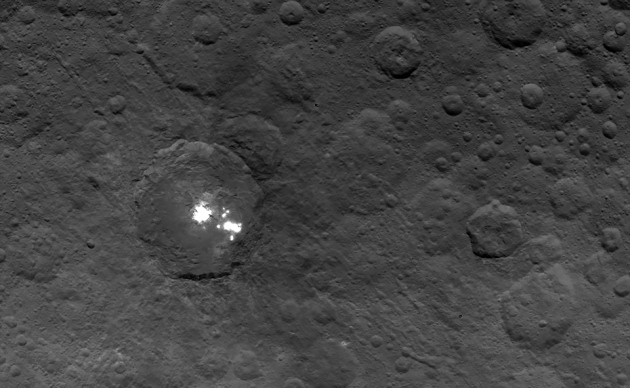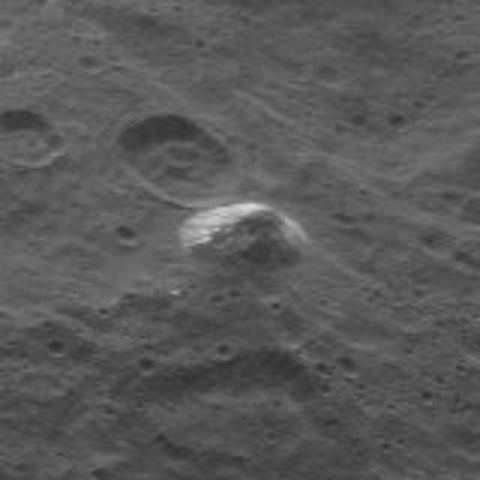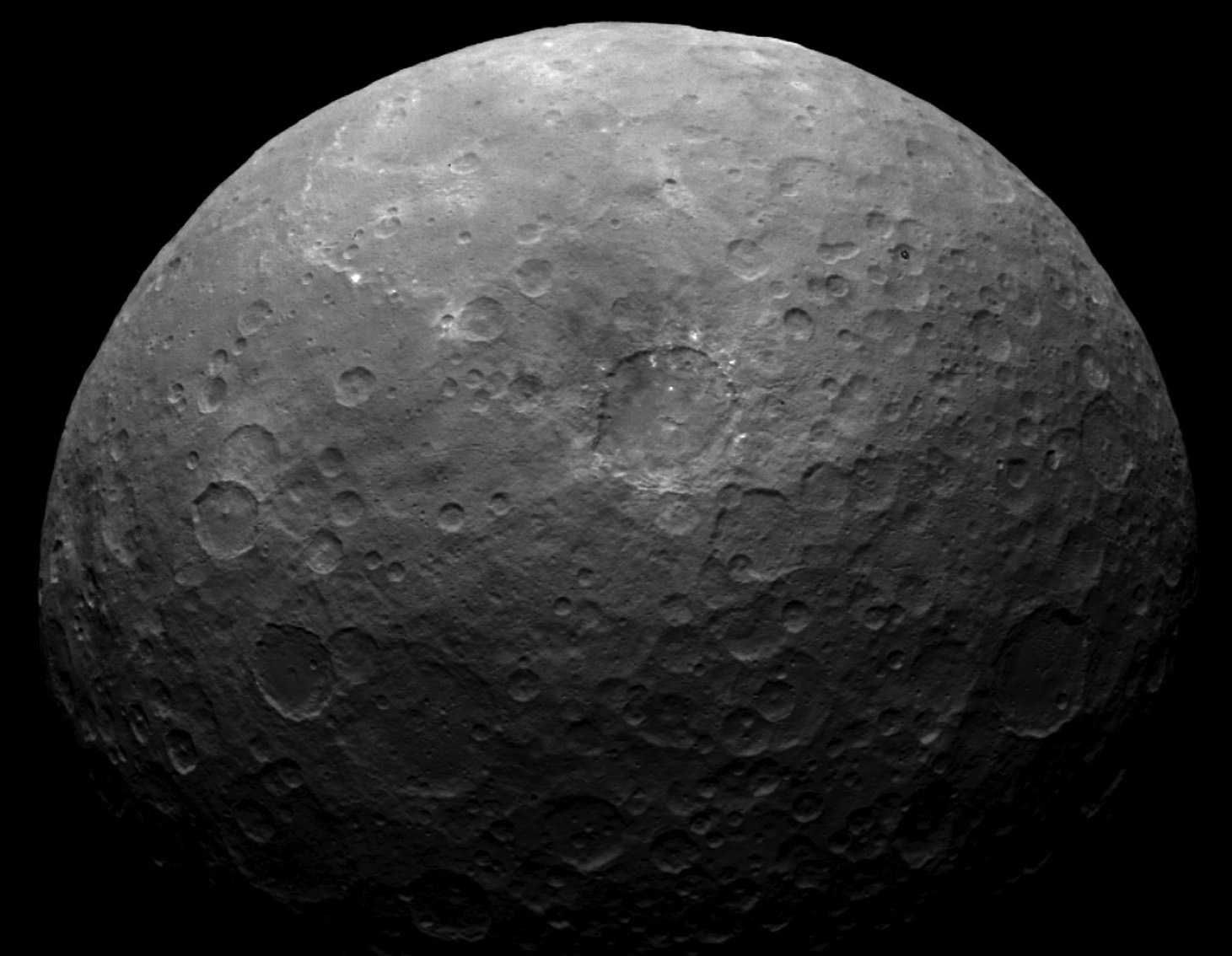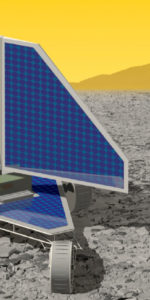
The intriguing bright spots on dwarf planet/asteroid Ceres have been fascinating the public and scientists alike for the past few months, and now a new discovery might provide a valuable clue as to just what these spots are made of: the Dawn spacecraft has detected a periodic haze over the brightest spots in Occator crater.
The haze reportedly can be seen in the crater at certain times of the day and has been seen more than once now. It also appears to be confined to within the crater itself.
Christopher Russell, a planetary scientist at the University of California, Los Angeles, suggests that these bright spots “could be providing some atmosphere in this particular region of Ceres.” He added: “At noontime, if you look at a glancing angle, you can see what seems to be haze. It comes back in a regular pattern.” The haze appears to cover about half the crater and stops at the rim.

This is the first time that haze has been reported on any object in the asteroid belt. It was already known that there was water vapor on Ceres, thanks to the Herschel Space Observatory, which detected it in 2014. Whether this haze is actually water vapor isn’t known yet, but it seems to be a good possibility given the previous findings.
It also isn’t known yet what the spots themselves are composed of, but mission scientists have been leaning toward ice or salts as the two most likely explanations. Ice may sublimate into vapor, which could account for the haze. Also, if the spots are evaporated salts (or ice), they could be leftover deposits from active cryovolcanism, a form of volcanism involving water and ice instead of molten rock. Ceres’ mass is already known to be composed of at least one-quarter water, more than any other known asteroid, so it’s an intriguing possibility. Ceres may turn out to be more geologically active than anticipated.
Adding to the puzzle, Russell had also tweeted: “Ceres bright spots have unusual distribution. Not created by impact. Different sizes, famous one is most complex set.”
At almost 621 miles (1,000 kilometers) in diameter, Ceres isn’t all that big by planetary standards, but is a good size for a dwarf planet or asteroid. “Ceres is so big compared to all the other asteroids that it’s really different,” said Andrew Rivkin, a planetary scientist at the Johns Hopkins University Applied Physics Laboratory in Laurel, Md. “It’s sort of the penultimate step before a planet.”
Dawn is just now entering a lower orbit around Ceres, which will provide closer images of these bright spots. Spots of various sizes and brightness have been seen all over Ceres, but the brightest ones in Occator crater (known collectively as Spot 5) are the ones that first grabbed attention. An infrared spectrometer onboard the spacecraft will help to determine if the spots are made of ice, salts, or something else. The first images have been tantalizing, but there is still debate as to how big these spots are and whether or not they are elevated above the surface. Interestingly, the first distant images seemed to show one bright spot, then two as the resolution increased, and now they are seen as two primary bright posts with numerous smaller ones around them.
There is also a fascinating conical mountain elsewhere on Ceres, which is about 3 miles (5 kilometers) tall, which is thought to be composed of solid ice, similar to the newly found mountains on Pluto. This mountain, though, is solitary, standing alone on an otherwise relatively flat plain.

Dawn also found that Ceres’ axial tilt is the opposite of what had been expected. As Russell noted, “Summer is winter and winter is summer.”
Right now, Dawn is orbiting less than 2,485 miles (4,000 kilometers) above Ceres’ surface, and by August it will be less than 932 miles (1,500 kilometers). From that vantage point, it will have the best view yet of the spots and haze, the biggest surprises of the mission so far. Whether Ceres is still geologically active or not, the study of this small world will be a major step in the understanding of other dwarf planets and asteroids. Some apparent shared characteristics with other bodies such as Pluto should help planetary scientists better understand the history of these fascinating worlds and how they evolved throughout the history of the Solar System.
Ceres’ surface is battered with many craters, but the puzzling features seen like the spots, haze, and weird mountain suggest that this small, enigmatic world may still be a geologically active place after all.
More information about the Dawn mission and Ceres is available here.
Want to keep up-to-date with all things space? Be sure to “Like” AmericaSpace on Facebook and follow us on Twitter: @AmericaSpace
Missions » New Horizons »





Clearly we are looking at the off gasing caused by mining operations of the surface for hydrogen production for life support or fuel systems.
Last one out forgot to turn the lights off.